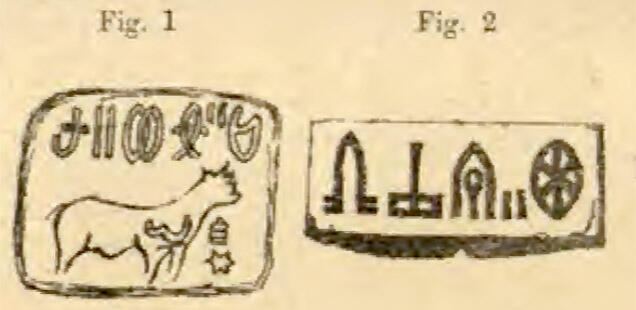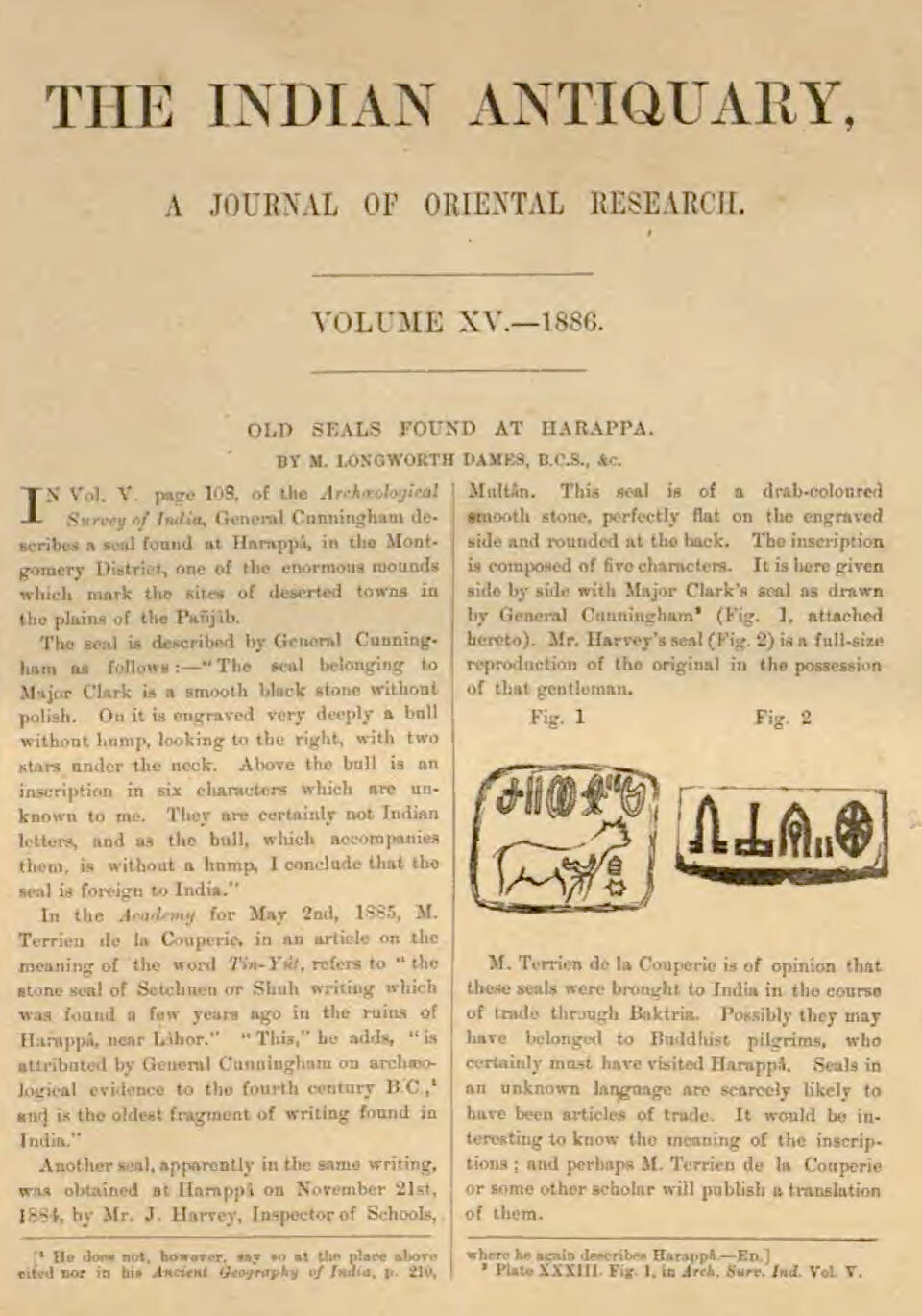Mansel Longworth Dames (1850-1922) was an Irish Indian Civil Service officer who primarily worked in Punjab after 1870. He became an important compiler and translator of Balochi stories, folklore and language after serving as Deputy Commissioner in a number of western districts bordering British Balochistan. After retiring to Britain, he served as an officer of the Royal Asiatic Society in London.
He was a still a young man in India, a few years from publishing his first book A Text Book of the Balochi language (1891) when he had the foresight to report on the discovery of a second seal (Fig. 2, above) that seemed to have a similarity to Major Clark's seal published by Cunningham in 1872 (Fig. 1, above). He noted the similarity in signs even though no common sign is found on both seals, and he published the newly discovered seal upside down. His article, published on the first page of The Indian Antiquary, testifies to the residual interest in Major Clark's seal among sleuthing scholars and amateurs.
Below is his original article [Image 2, above]:
OLD SEALS FOUND AT HARAPPA
By M. Longsworth Dames, B.C.S., &c.
"In Vol. V p. 108 of The Archaeological Survey of India, General Cunningham describes a seal found at Harappa, in the Montgomery District, one of the enormous mounds which mark the sites of deserted towns in the plains of the Panjab.
The seal is described by General Cunningham as follows:– "The seal belonging to Major Clark is a smooth black stone without polish. On it is engraved very deeply a bull without hump, looking to the right, with two stars under the neck. Above the bull is an inscription in six characters which are unknown to me. They are certainly not Indian letters, and as the bull, which accompanies them is without a hump, I conclude that the seal is foreign to India."
In the Academy for May 2nd, 1885, M. Terrien de la Couperie, in an article on the meaning of the wordTin-Yut, refers to "the stone seal of Setchnen or Shuh writing which was found a few years ago in the ruins of Harappa, near Lahor." "This," he adds, "is attributed by General Cunningham on archaeological evidence to the fourth century B.C.1, and is the oldest fragment of writing found in India."
Another seal, apparently in the same writing, was obtained on November 21st, 1884, by Mr. J. Harvey, Inspector of Schools, Multan. This seal is of a drab-coloured smooth stone, perfectly flat on the engraved side and rounded at the back. The inscription is composed of five characters. It is here given side by side with Major Clark's seal as drawn by General Cunningham2 (Fig. 1, attached hereto). Mr. Harvey's seal (Fig. 2) is a full-size reproduction of the original in the possession of that gentleman.
M. Terrien de la Couperie is of the opinion that these seals were brought to India in the course of trade through Baktria. Probably they may have belonged to Buddhist pilgrims, who certainly must have visited Harappa. Seals in an unknown language are scarcely likely to have been articles of trade. It would be interesting to know the meaning of the inscriptions; and perhaps M. Terrien de la Couperie or some other scholar will publish a translation of them."
- M. Longsworth Dames, The Indian Antiquary, Volume XV, 1886, p. 1.
Images: 1. Close shot of seal and tablet found at Harappa that the piece discusses.
2. Original article in The Indian Antiquary, Volume XV, 1886, p. 1.
1. [He does not, however, say so at the place above cited in his Ancient Geography of India, p. 219, where he again describes Harappa.–ED] >↩
2. Plate XXXIII. Fig. 1 in Arch. Surv. Ind. Vol. V.">↩




